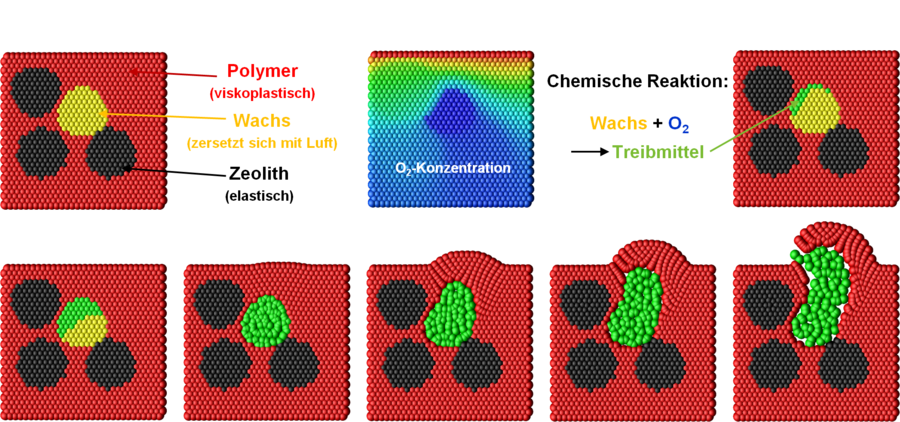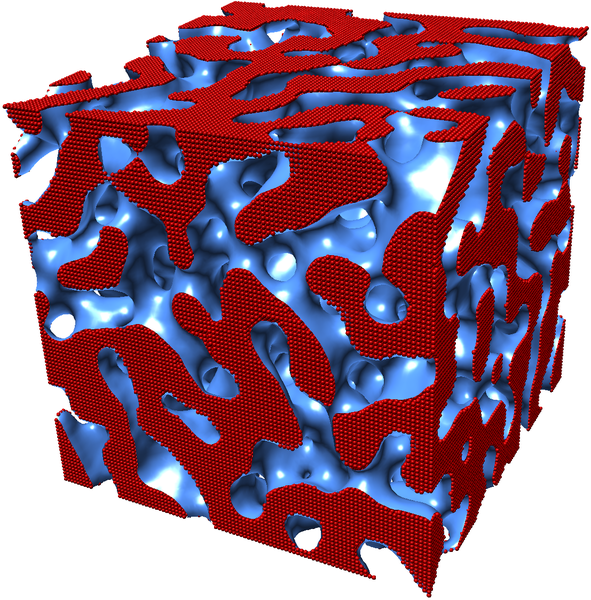Results
As described at the beginning, open-porous functional materials play an important role in various applications.
Formation by release of a blowing agent
|
In the following, an example for the formation of an open-porous material by release of a blowing agent is discussed and depicted in Figure 1. The blowing agent (green particles) is formed by thermal decompositions of wax (yellow particles). The reaction rate is dependent on the oxygen concentration, which has to diffuse through the polymeric matrix. Due to the increasing pore pressure, the shear rate locally exceeds the yield stress of the viscoplastic polymer (red particles). By plastic deformation, the open-porous structure is formed.
Polymer membranes
|
Polymer membranes are another example of open-porous materials. They are mainly manufactured by phase inversion. A polymer solution is precipitated with a nonsolvent. The homogeneous solution is splitted into two phases, a polymer rich and a polymer lean phase. Thereby, different structures depending on the polymer solution composition and other process variables are formed.
A simplified example phase separation, which is a main aspect of phase inversion, is shown in Figure 2. We considered an ideal, equimolar mixture.



